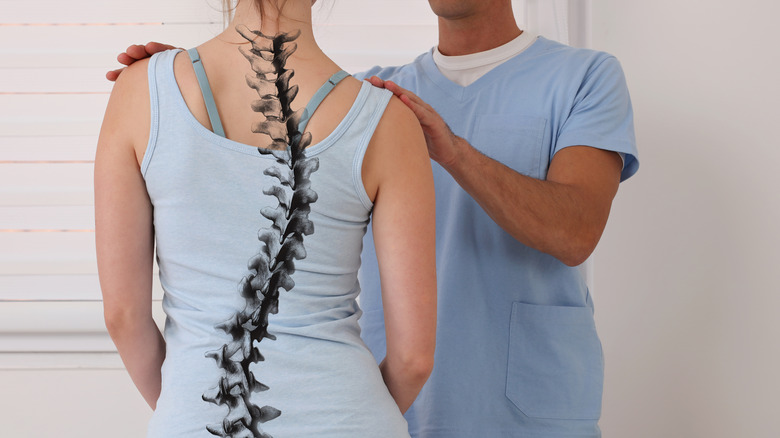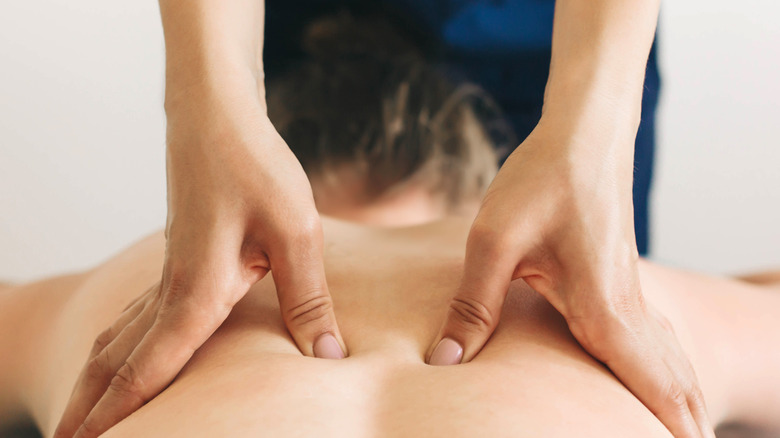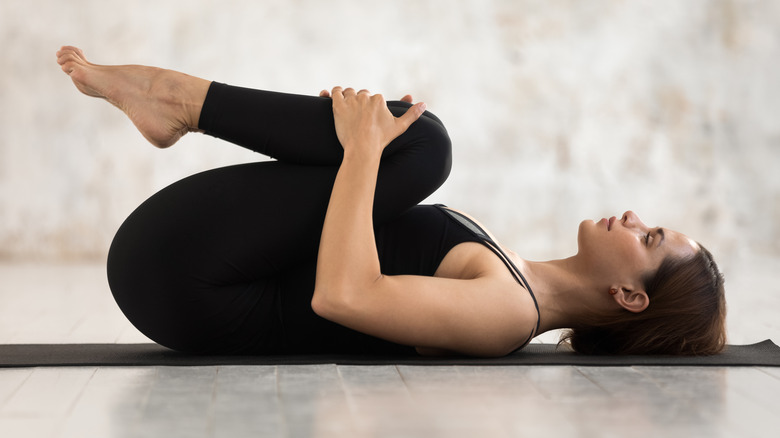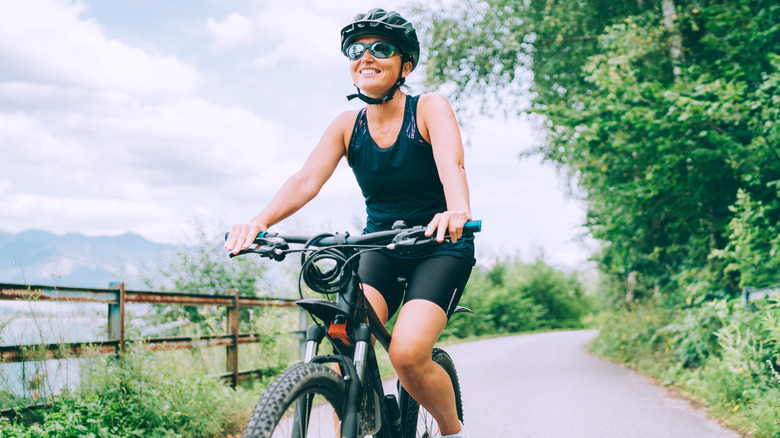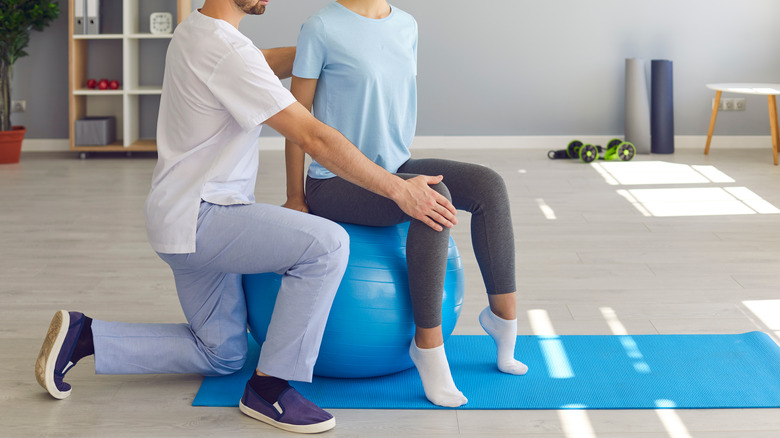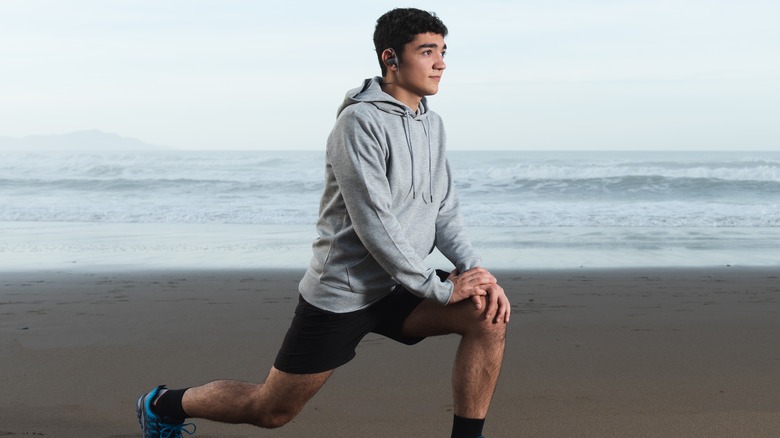Tips For Easing Scoliosis Pain
Wondering what to do about scoliosis pain? First, make sure you understand the cause of your problem. Scoliosis, a condition that affects 6 million to 9 million Americans, causes the spine to twist and curve sideways, explains the American Association of Neurological Surgeons (AANS). It usually develops around age 10 to 15, but it can occur in adulthood, too. Sometimes, it affects adults who didn't receive proper treatment in their younger years.
About 80% of patients are diagnosed with idiopathic scoliosis, meaning that their condition doesn't have a specific cause. The remaining 20% have congenital or neuromuscular scoliosis, reports the AANS. The former is diagnosed in newborns and has genetic causes, whereas neuromuscular scoliosis can result from an underlying condition, such as spinal cord trauma. This disorder can occur anywhere along the spine, affecting the cervical, thoracic, or lumbar regions.
Adult scoliosis is often due to the wear and tear of the spine, according to the University of Texas Southwestern Medical Center. Therefore, it's different from the idiopathic form. Depending on its severity, it may cause low back pain, leg pain, uneven shoulders, unusually high hips, and other problems. In some cases, it may cause the spinal canal to narrow, putting pressure on the nerves. As researchers note, surgery should be your last resort. From physical therapy and postural exercises to daily stretching, there are ways to ease scoliosis pain without going under the knife.
Massage therapy can reduce lower back pain
Massage therapy has long been used as an alternative treatment for lower back pain. What you may not know is that it can also help with scoliosis pain and improve physical function, reports a 2016 case study published in the International Journal of Therapeutic Massage and Bodywork. Researchers investigated the effects of massage therapy on a 63-year-old man with degenerative disc disease, scoliosis, and other rheumatologic conditions. The patient received four massages over 20 days. By the end of the study, he was able to walk more easily and needed less medication to manage the pain.
Another case report, which appeared in the Journal of Chiropractic Medicine in 2012, suggests that stretching, massage, and other manual therapies may help correct scoliosis in children, leading to a curve reduction of around 55%. Regular massage can also loosen up the muscles that support your spine, which, in turn, may relieve spasms, according to the CLEAR Scoliosis Institute. In the long run, it can improve your flexibility and range of motion, leading to a better quality of life.
Try Pilates to improve your posture and reduce back pain
Pilates is best known for its ability to build core strength and boost overall conditioning. Most exercises require bracing your core while breathing in and out slowly, leading to feelings of well-being. Over time, this practice can increase flexibility, blood flow, and muscular strength, yoga therapist Judi Bar told the Cleveland Clinic. "It strengthens your core and, ultimately, it can help lower back pain because, besides tight muscles, lower back pain also comes from misalignment and lack of strength," she added. Bar also says that Pilates may improve your posture and prevent muscle imbalances, which can further reduce back pain.
Not surprisingly, clinical evidence supports these claims. For example, a 2012 study featured in the Journal of Bodywork and Movement Therapies found that Pilates may reduce spine curvature, decrease pain, and improve trunk flexion in people with scoliosis. Other studies indicate that core work, including Pilates, can help correct spinal deformities and increase functional capacity in scoliosis patients, reports a 2021 review published in the journal Clinical Rehabilitation. Scientists say that core-based exercises may also enhance mental focus, mood, and self-confidence, increasing mental well-being.
Ideally, reach out to a qualified instructor, suggests Bar. While it's possible to learn and practice Pilates at home, you may find it difficult to maintain proper form and breathe the right way. Bar also recommends adding cardiovascular and strength training to your workout routine so you can fully reap the benefits.
Engage in regular exercise to keep your back strong
Speaking of exercise, did you know that it's one of the best things you can do for your spine and back muscles? Board-certified physician Dr. Jasmine Shaikh says that regular exercise can slow the progression of scoliosis and prevent or reduce pain (via MedicineNet). Core work and stretching exercises, especially those targeting the back muscles, are the most beneficial, notes Dr. Shaikh. To stay safe, avoid strenuous or high-impact workouts and any activities that put stress on the back, such as heavy lifting, backbends, and football.
However, there are no set rules on what your workouts should look like — it all comes down to your fitness level and the severity of your symptoms. For example, clinical research shows that cycling, swimming, horseback riding, and other activities or sports are likely safe for people with scoliosis, according to a 2009 review published in the Journal of Chiropractic Medicine. As the scientists note, scoliosis shouldn't stop young athletes from participating in sports. The same goes for those who wear back braces; it's perfectly fine to exercise or play sports with your brace on, say the review authors.
As you would expect, some activities are more beneficial than others. Core stabilization exercises, such as the side plank, as well as crunches, bridges, and certain yoga poses, can reduce the spinal curvature by more than one-third, reports Today's Dietitian. Swimming, water aerobics, tai chi, and low-impact aerobic workouts appear to be safe, too.
Try the Schroth method to achieve better spinal alignment
Scoliosis pain can also be managed with the Schroth method, a form of physical therapy that aims to restore muscular symmetry and improve posture. Developed in 1920, this therapeutic approach uses a combination of postural exercises and breathing techniques to help patients slow the progression of scoliosis and avoid surgery. In clinical trials, the Schroth method has been shown to improve the spinal curvature, reduce pain, and enhance physical function, according to a 2016 review featured in Scoliosis and Spinal Disorders.
The Schroth method can be used on patients of all ages, regardless of the severity of their condition, notes the Hospital for Special Surgery (HSS). Plus, it seems to be more effective than Pilates, suggests a 2016 study featured in the Journal of Physical Therapy Science. While both approaches can reduce the spinal curvature and correct your posture, the Schroth method yields better results. With regular practice, it may improve neuromuscular control, strength, flexibility, and endurance.
A typical session lasts 40 to 45 minutes, and you will need anywhere between four and 20 treatment sessions to achieve significant improvements. Generally, it's recommended to continue the program at home so you can maintain the results, notes the HSS.
Improve your flexibility with daily stretching
Stretching may be the last thing on your mind when you're in pain, but it can make all the difference. This form of exercise relieves muscle tension, which in turn may reduce pain, according to the experts at Iowa Orthopedics. For example, you could try the bird-dog pose, a basic stretch that requires simultaneously lifting one arm and the opposite leg from a quadrupled position. Repeat on both sides. Other similar exercises, such as the cat-cow pose and the sitting rotation stretch, can boost your flexibility and range of motion, says WebMD. Over time, you may experience less pain and move around more easily.
While it's important to stretch your back, you should also focus on the psoas, piriformis, rhomboids, and other smaller muscles. The psoas, for instance, plays a key role in hip flexion, allowing you to stand and walk, explains Spine Health. A sedentary lifestyle, prolonged sitting, and other factors can cause this muscle to become tight, putting strain on the lower back. As a result, you may experience back pain.
To stretch the psoas, get in a lunge position, with the right knee on the floor. Bring the opposite leg in front of you and bend the left knee at a 90-degree angle. Slowly push the left knee forward until you feel a stretch in the front of your right hip. Hold for about 30 seconds and then switch sides. Repeat two to three times per day, recommends Spine Health.

